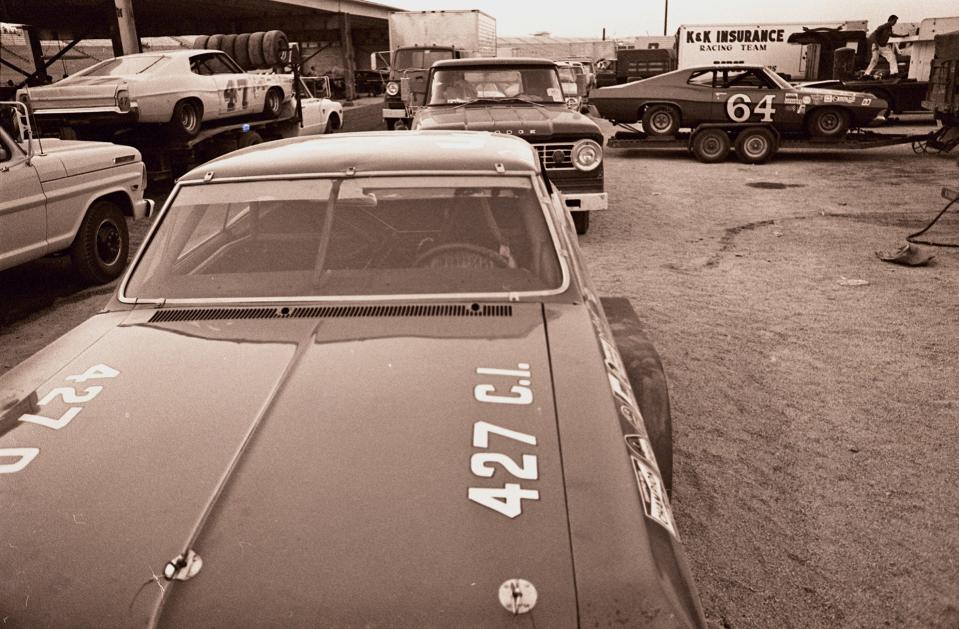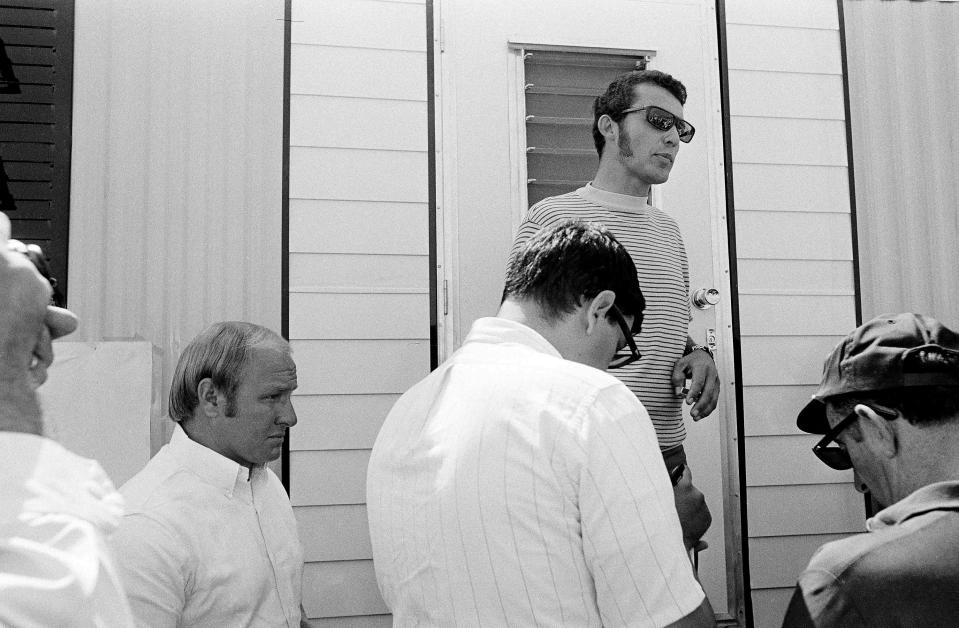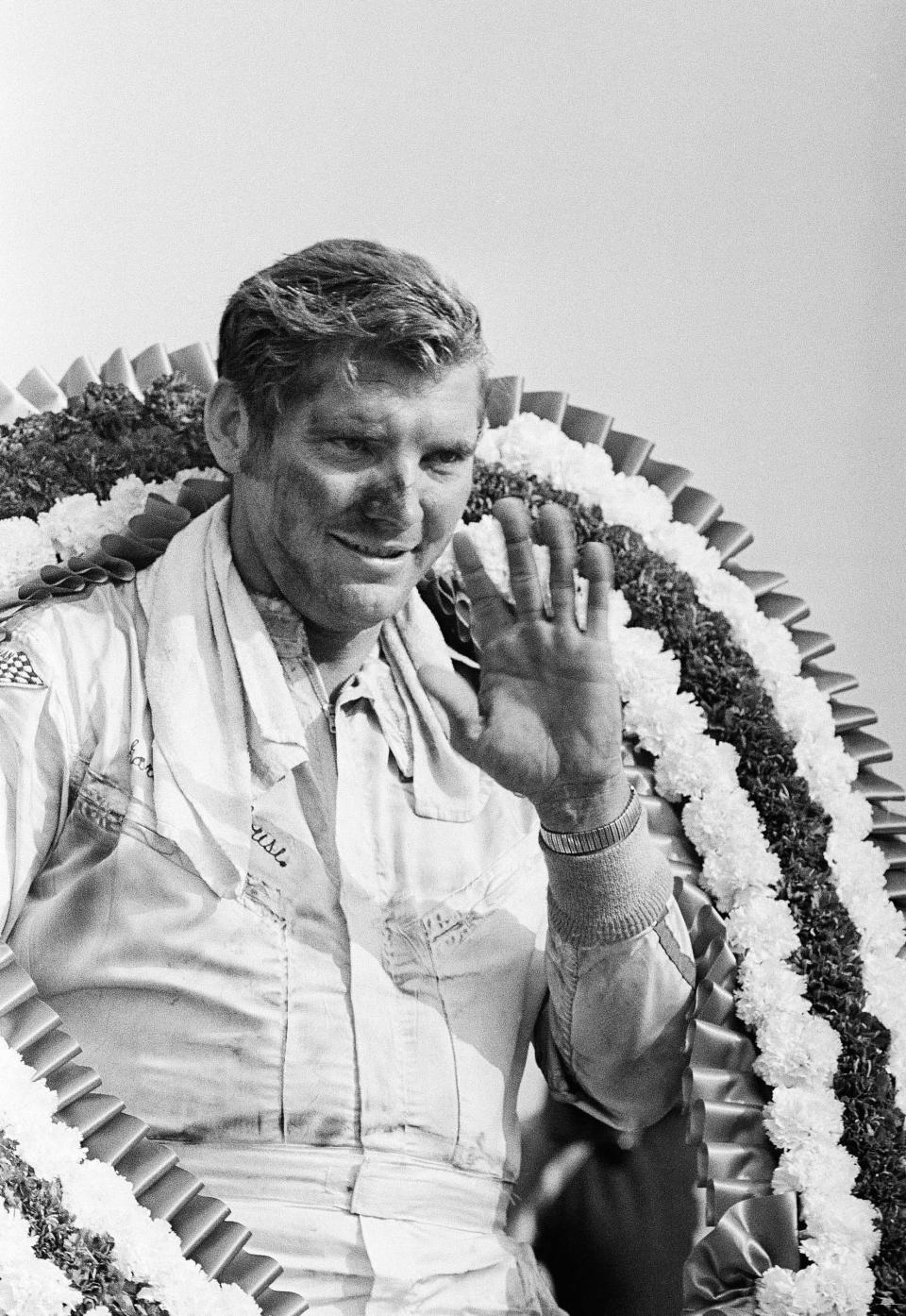The time Richard Petty refused to race and led boycott over NASCAR driver safety concerns
Considering the concerns NASCAR drivers are currently feeling about safety with the Gen 7 race car being used in the Cup Series, the circumstances are very similar to a time in NASCAR history 53 years ago when another safety issue was very much in the headlines.
During the second weekend of September 1969, Talladega Superspeedway, then known as Alabama International Motor Speedway, was set to open to the public for its inaugural Talladega 500. It was to be the biggest and fastest speedway on NASCAR’s then 54-race schedule. And still is.
The race turned into a showdown between Bill France Sr., founder of NASCAR and builder of the track, and the drivers that competed in the Cup Series, then known as the Grand National division. But events leading up to the race are what make it even more memorable.
NASCAR drivers faced several concerns that season. As a result, they met and formed what was called the Professional Drivers Association, referred to as the PDA. Race car safety, purse payouts and lengthy weekly schedules were just a few of the topics of discussion in 1969.
The PDA was officially incorporated in August of 1969 with Richard Petty named its president.
SOLUTIONS COMING:NASCAR promises drivers safety changes on new car for 2023
HISTORY LESSONS:From bizarre races to breath-taking wrecks, Talladega has seen some of NASCAR's strangest moments
Competitors' concerns began to mount by late spring. Leading up to the race at Talladega, a dozen drivers quit in protest over the distribution of prize money. Meetings were held prior to the Southern 500 at Darlington Raceway on Sept. 1., to sign more drivers into PDA membership.
Practice began at Talladega on Tuesday, Sept. 9, 1969, with qualifying scheduled for the next day. The racing surface at the 2.66-mile track was immediately deemed too rough.
Tire manufacturers Goodyear and Firestones made their best efforts to build tires that would hold up to the 190-mph speeds that engines were generating. Lap after lap, tires simply wouldn’t hold together. The track’s rough surface was chewing them to pieces, especially right fronts, due to downforce loads as they entered the turns.
David Pearson, driver of the Holman-Moody No. 17 Ford, would eventually win his third NASCAR championship that season. When asked about the condition of the track that weekend, he replied, according to the January 1993 edition of American Racing Classics, “It’s in the trioval. If we had as smooth a surface as we have at MIS (Michigan International Speedway) we could stand on it all the way around. If there’s another (groove), I haven’t had time to find it. You spend all the time driving.”

Only nine cars could qualify the Wednesday before the race, and only four more by Thursday with a 40-mph separation in speed from fastest to slowest. By Friday, another 14 cars qualified for a total of 27. Eventually, 36 cars would make up the field. Twenty would not be Cup Series machines.
Also that Friday, both tire companies brought in more tire compounds to be tested. Drivers Charlie Glotzbach and Donnie Allison had them mounted to their cars and laps were completed. Still. their tires were no better than the others and came apart just as quickly. Tire executives were running out of options and had very little else to offer.
“I worked for Firestone then as a field representative and I was in the middle of it,” said Humpy Wheeler. “We tried everything but just didn’t have a tire that would work for that track surface that weekend. One way they might have gotten through that weekend was to have used a carburetor restrictor plate to slow them down but no one thought of it at that time. They weren’t doing that then. It was a major problem but even at reduced speeds the tires just weren’t holding up. Restrictor plates didn’t come into NASCAR really until after 1987 when Bobby Allison got into the fence there at Talladega.”
The PDA voted Friday evening to withdraw from the race. Then on Saturday morning, the PDA met with France one last time in hopes of a resolution they knew wouldn’t come.
Grand Touring race cars were there as a companion event for a 200-mile Saturday race made up of the lighter late 1960s Ford Mustangs, Chevrolet Camaros and Mercury Cougars. France turned laps at a reduced speed in a Ford Torino provided by Holman Moody. Few knew, but France blistered a tire at 150 mph during that practice session.

France wanted Cup Series drivers to drive at a slower pace in the Cup race Sunday, but they refused the idea. That evening, the PDA voted to load up and go home if a final deal could not be put together on Saturday. After heated words were exchanged on Saturday afternoon between Petty, driver LeeRoy Yarbrough and France as a large crowd of drivers and crew members looked on, Petty led transporters as they left the track.
“We stick our necks out every time we race,” Petty said to France on behalf of the PDA, according to the AMC article. “We aren’t foolish enough to play Russian roulette. The track is rough and dangerous. We will not race on the track as it is now.”
Dale Inman, Petty’s longtime crew chief, remembered the PDA and the 1969 Talladega 500 very well.
“It’s like it happened yesterday,” Inman said. “France wanted us to test tires, but Richard said no. We purposely left the radiator out of our car so it wouldn’t be ready to drive. The track was in bad shape and the tires just couldn’t handle it. They were coming apart in three or four laps. We had no choice but to leave. We loaded up and everyone followed us. There was no way the tires would last 500 miles that weekend.”

Thirty Cup Series drivers and their race cars left the garage area, while 13 Cup Series drivers stayed. France filled the remaining spots in the field with Grand Touring cars from the race a day earlier. The race was won by Richard Brickhouse for his only Cup Series win with just 15 cars running at the finish. Another finisher in that race was Richard Childress, a driver in the Cup Series from 1969 to 1981 and later a six-time Cup Series championship team owner with Dale Earnhardt. His first race at Talladega was that race in 1969.
“I will always remember that race at Talladega,” Childress said. “I ... took what I made that day and built my first race shop with it. That was the start of RCR Enterprises a little over 50 years ago.”
By 1972, the PDA dissolved with very little fanfare but will always be associated with the Talladega 500 of 1969.
Upcoming races
Oct. 16 — Las Vegas Motor Speedway
Oct. 23 — Homestead-Miami Speedway
Oct. 30 — Martinsville Speedway
Nov. 6 — Phoenix Raceway
This article originally appeared on The Fayetteville Observer: Richard Petty refused to race because of NASCAR driver safety concerns
